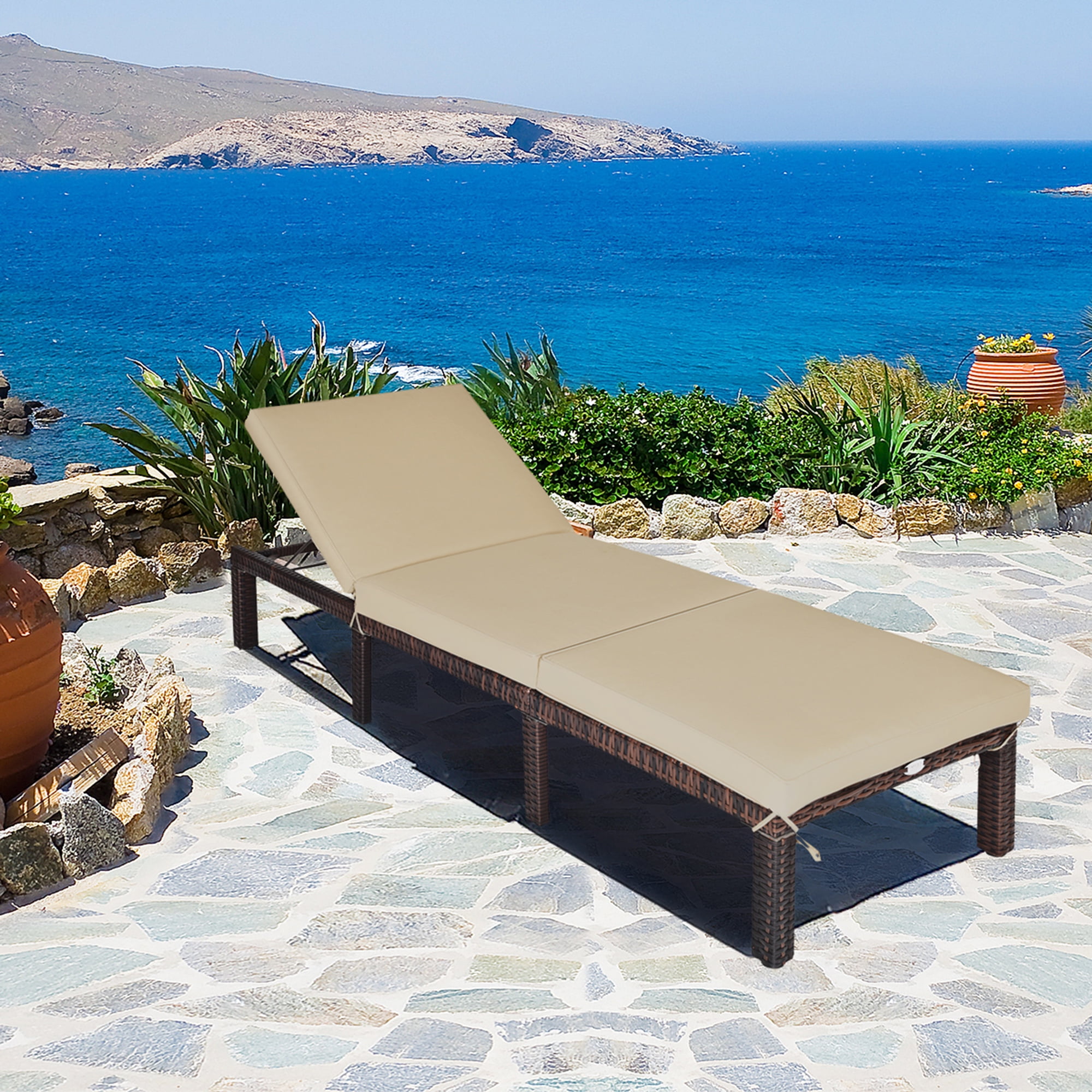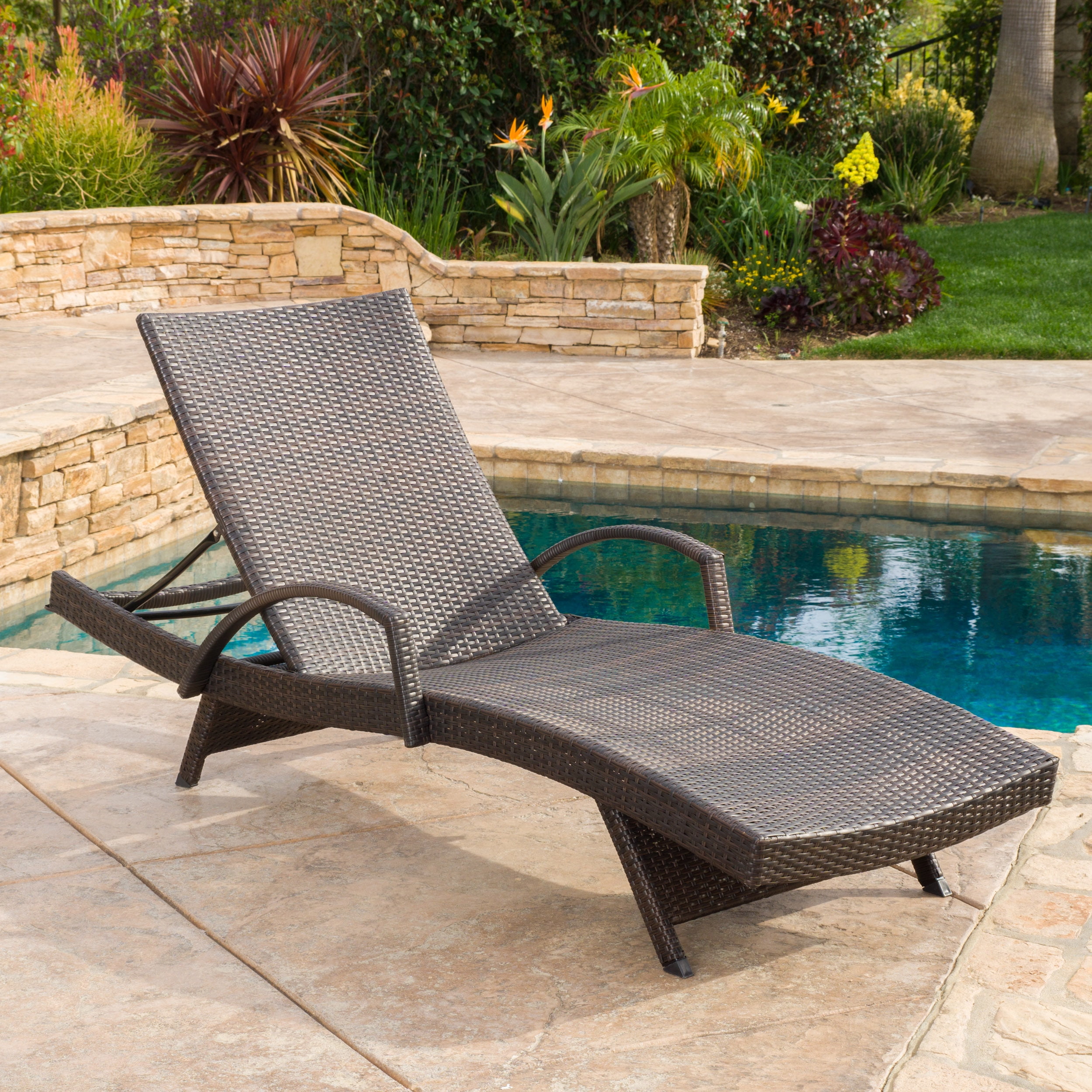Rattan Chaise Lounge Chair

The rattan chaise lounge chair, with its timeless elegance and enduring comfort, embodies a rich history interwoven with nature’s artistry. From its humble beginnings in Southeast Asia, rattan has journeyed across continents to become a beloved staple in homes worldwide, captivating hearts with its unique blend of durability, flexibility, and natural beauty.
History and Origins of Rattan Furniture, Rattan chaise lounge chair
The story of rattan furniture dates back centuries, deeply rooted in the traditions of Southeast Asian cultures. Rattan, a fast-growing, resilient vine, was readily available in the region’s lush tropical forests. Early inhabitants harnessed its strength and flexibility to create practical and beautiful everyday objects, including furniture. Over time, the craftsmanship of rattan furniture evolved, becoming an art form passed down through generations.
- Early Uses: Rattan’s versatility allowed for its use in crafting a wide range of objects, from baskets and mats to furniture and musical instruments. The resilience of rattan made it ideal for constructing sturdy furniture, while its flexibility allowed for intricate designs and intricate weaving patterns.
- Evolution of the Chaise Lounge: The chaise lounge chair, designed for relaxation and comfort, emerged as a popular form of furniture in the 18th century. Rattan’s lightweight and breathable properties made it an excellent material for constructing comfortable and airy chaise lounges. The use of rattan in chaise lounges allowed for a variety of designs, from traditional to contemporary, catering to diverse aesthetics.
- Global Influence: As trade routes expanded, rattan furniture began to find its way to other parts of the world, captivating audiences with its unique charm. The popularity of rattan furniture grew during the colonial era, as European powers sought to import exotic materials and designs. Rattan’s adaptability to different styles made it a versatile choice for both traditional and modern interiors.
Unique Properties of Rattan
Rattan’s inherent qualities have made it a sought-after material for furniture construction for centuries. Its durability, flexibility, and natural beauty contribute to its enduring appeal.
- Durability: Rattan is known for its exceptional strength and resilience. Its fibers are tightly interwoven, creating a robust structure that can withstand wear and tear. This durability makes rattan furniture suitable for both indoor and outdoor use, providing long-lasting enjoyment.
- Flexibility: Rattan’s flexibility allows for the creation of intricate designs and curves, enabling furniture makers to craft pieces with elegant and comfortable forms. The ability to bend and shape rattan allows for the construction of unique and eye-catching designs, adding a touch of artistry to furniture pieces.
- Natural Beauty: Rattan’s warm, natural hue and distinctive texture lend a unique charm to furniture pieces. Its natural beauty complements a wide range of interior styles, from rustic to modern. Rattan’s sustainable and renewable nature also aligns with contemporary values of eco-consciousness.
Renowned Designers and Brands
Throughout history, renowned designers and brands have recognized the potential of rattan to create iconic furniture pieces. Their innovative designs have shaped the evolution of rattan furniture, pushing boundaries and inspiring generations of designers.
- Marcel Breuer: A pioneer of modern design, Marcel Breuer incorporated rattan into his furniture designs, seeking to create functional and aesthetically pleasing pieces. His rattan chairs and chaise lounges, characterized by their clean lines and minimalist aesthetics, became iconic symbols of mid-century modern design. Breuer’s approach to design emphasized the importance of form following function, while also highlighting the inherent beauty of natural materials.
- Hans J. Wegner: Known for his meticulous craftsmanship and timeless designs, Hans J. Wegner created a number of celebrated rattan furniture pieces. His rattan chairs and armchairs, often characterized by their elegant curves and intricate weaving patterns, showcased his mastery of the material. Wegner’s design philosophy emphasized the importance of comfort and functionality, while also paying homage to traditional craftsmanship techniques.
- Verner Panton: A bold and innovative designer, Verner Panton explored the possibilities of rattan in his furniture designs. His rattan chairs and loungers, often featuring vibrant colors and playful forms, challenged traditional notions of furniture design. Panton’s work exemplified the use of rattan to create furniture that was both functional and visually striking, pushing the boundaries of design and inspiring new possibilities.
Design and Functionality

The rattan chaise lounge chair is a timeless piece of furniture that combines style, comfort, and functionality. Its intricate design and natural materials create a unique aesthetic that complements various interior design styles. Let’s delve into the design elements and ergonomic features that contribute to the overall appeal and practicality of this beloved chair.
Design Elements
The design of a rattan chaise lounge chair is characterized by its intricate weaving patterns, natural materials, and graceful curves. The frame, backrest, armrests, and seating area all play a role in creating a comfortable and visually appealing piece of furniture.
- Frame: The frame of a rattan chaise lounge chair is typically constructed from sturdy rattan poles that are woven together to create a strong and durable structure. The frame provides the foundation for the chair and supports its weight.
- Backrest: The backrest of a rattan chaise lounge chair is designed to provide comfortable support for the back. It is often curved to conform to the natural shape of the spine, promoting good posture and reducing strain.
- Armrests: The armrests of a rattan chaise lounge chair are designed to provide support for the arms and shoulders. They can be straight or curved, depending on the style of the chair.
- Seating Area: The seating area of a rattan chaise lounge chair is typically wide and deep, providing ample space for relaxation and lounging. The rattan weave creates a breathable and comfortable surface that conforms to the body’s shape.
Styles of Rattan Chaise Lounge Chairs
Rattan chaise lounge chairs come in a variety of styles, each with its own unique design features. Here are some popular styles:
- Traditional: Traditional rattan chaise lounge chairs are characterized by their classic design and intricate weaving patterns. They often feature curved armrests, a high backrest, and a wide seating area.
- Modern: Modern rattan chaise lounge chairs are designed with a minimalist aesthetic. They often feature clean lines, simple shapes, and a focus on functionality.
- Contemporary: Contemporary rattan chaise lounge chairs blend traditional and modern elements. They may feature intricate weaving patterns, but they also incorporate contemporary design features such as sleek lines and bold colors.
Ergonomic Features
A well-designed rattan chaise lounge chair prioritizes comfort, support, and adjustability. These ergonomic features contribute to a relaxing and enjoyable lounging experience.
- Comfort: The natural rattan weave provides a breathable and comfortable surface that conforms to the body’s shape. The chair’s curved backrest and armrests offer support for the spine, neck, and shoulders, promoting relaxation and reducing strain.
- Support: The frame of a rattan chaise lounge chair is designed to provide sturdy support for the body. The chair’s weight distribution is balanced, ensuring stability and preventing sagging.
- Adjustability: Some rattan chaise lounge chairs feature adjustable backrests, allowing users to customize the angle of the chair to suit their individual needs and preferences. This feature enhances comfort and provides optimal support for various lounging positions.
Uses and Applications

Rattan chaise lounge chairs are versatile pieces of furniture that can enhance various spaces, both indoors and outdoors. Their natural beauty, durability, and comfort make them a popular choice for creating relaxing and stylish environments.
Outdoor Patios and Gardens
Outdoor patios and gardens are ideal settings for rattan chaise lounge chairs. Their weather-resistant properties make them suitable for outdoor use, allowing you to enjoy the fresh air and sunshine without worrying about damage. The natural materials blend seamlessly with the surrounding greenery, creating a tranquil and inviting atmosphere.
Living Rooms
Rattan chaise lounge chairs can add a touch of natural elegance to living rooms. Their lightweight design allows for easy movement, making them perfect for rearranging furniture arrangements. The open weave construction provides excellent airflow, making them a comfortable choice for warmer climates.
Bedrooms
Rattan chaise lounge chairs can be incorporated into bedrooms to create a relaxing and inviting atmosphere. They can serve as a reading nook, a place to unwind after a long day, or a stylish addition to the foot of the bed. Their natural materials promote a sense of calm and tranquility, enhancing the overall ambience of the bedroom.
Advantages of Using Rattan Chaise Lounge Chairs in Different Environments
Rattan chaise lounge chairs offer several advantages, making them a practical and aesthetically pleasing choice for various settings.
- Weather Resistance: Rattan is naturally weather-resistant, making it ideal for outdoor use. It can withstand rain, sunshine, and humidity without deteriorating quickly.
- Comfort: The natural curves of rattan provide comfortable support, allowing you to relax and unwind. The open weave construction allows for good airflow, keeping you cool and comfortable in warmer climates.
- Aesthetics: Rattan’s natural beauty adds a touch of elegance and warmth to any space. Its versatility allows it to complement various interior design styles, from traditional to modern.
Incorporating Rattan Chaise Lounge Chairs into Different Interior Design Styles
Rattan chaise lounge chairs can be seamlessly incorporated into various interior design styles.
- Traditional: In traditional settings, rattan chaise lounge chairs can be paired with plush cushions and throws in warm, earthy tones. The natural textures of rattan complement the classic elegance of traditional décor.
- Modern: For modern interiors, rattan chaise lounge chairs can be paired with minimalist furniture and accessories. Choose chairs with clean lines and simple designs, and complement them with bold, geometric patterns or vibrant colors.
- Bohemian: In bohemian spaces, rattan chaise lounge chairs can be used to create a relaxed and eclectic atmosphere. Pair them with colorful textiles, macrame hangings, and vintage accessories to enhance the bohemian vibe.
- Coastal: For coastal-inspired interiors, rattan chaise lounge chairs can be paired with blue and white accents, nautical-themed accessories, and natural materials like driftwood and seashells.
Right, so you’re thinking about chilling out in a rattan chaise lounge chair, soaking up the sun, right? But maybe you’re also thinking about sprucing up your living room with some new vibes. Well, check out madison home wingback chair covers to give your chairs a fresh look.
And then, when you’re all done, you can crack open a cold one and relax in that rattan chaise lounge, feeling like a king or queen.
A rattan chaise lounge chair is all well and good, but let’s be real, it’s gonna get grubby after a while, innit? That’s where you need to check out terry cloth chair covers – they’ll keep your chair looking fresh and clean, even if you’re a bit of a messy geezer.
Plus, they’re comfy as hell, so you can chill out in style.